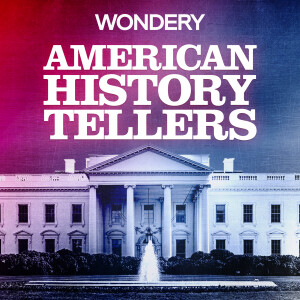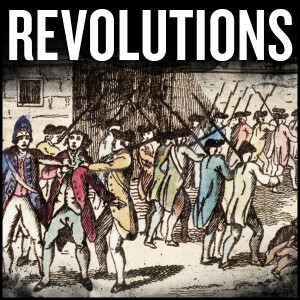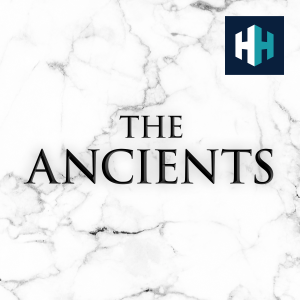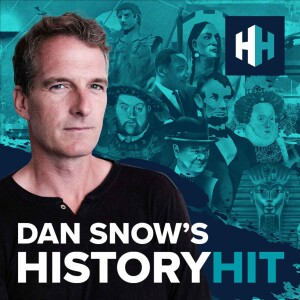

Read Beat (...and repeat)
https://rss.buzzsprout.com/1950812.rssEpisode List

In the Japanese Ballpark by Robert Fitts
You don’t have to worry that U.S. baseball fans could be overlooking Japanese baseball. Not after the Los Angeles Dodgers won the World Series for the second year in a row, led by Japanese stars Shohei Ohtani, Yoshinobu Yamamoto, and Roki Sasaki.Rob Fitts offers a glimpse into the Japanese game that developed these stars in his 11th book on Japanese baseball, In the Japanese Ballpark. Fitts dissects the Japanese game from every angle, from the perspective of players, umpires, owners, fans, and media. He even includes the beer girls that patrol the stands, hefting 40-pound kegs of beer, and some of the strange mascots that represent each team (like the Mysterious Fish of the Chiba Lotte Marines).Fitts provides plenty of history in his present account, tracing the origin of baseball in Japan to Horace Wilson, the Maine professor who traveled to Japan on an educational mission, introducing the game to his students in 1872. By 1905, most Japanese high schools fielded baseball teams. Professional baseball took hold in Japan after a successful barnstorming tour of the country by U.S. major-leaguers led by Babe Ruth in 1934.A previous Fitts book, Banzai Babe Ruth, details the 1934 tour, an attempt to use baseball diplomacy before the U.S. and Japan collided on the battlefield seven years later. That book chronicles the overseas adventures of some of baseball’s most colorful legends. Along with Ruth, who had just completed his last season with the New York Yankees, you had Connie Mack, the manager who always wore a suit in the dugout, Lou Gehrig, Lefty Gomez, Earl Averill, Lefty O’Doul, described by Fitts as “the greatest player you never heard of,” and Moe Berg, the Detroit Tigers catcher who became a spy in World War II.Admitting a love for the Hiroshima Carp, a team he says with the most amazing fans, Fitts feels Japanese baseball could win a place in the hearts of American fans with a little more exposure. In the meantime, he offers a guide on where to find Japanese baseball online and via cable in this country.Fitts says four more Japanese players will probably join the U.S. big leagues in 2026, though they’re not likely to have the star power of an Ohtani or Yamamoto. The author has concerns that if the top stars exit Japan for bigger salaries in the U.S., Nipponese Professional Baseball could suffer the same fate as the Negro Leagues did in the States, when the best players went over to the major leagues.Fitts expresses admiration and love for the Japanese game and the festive atmosphere at the Japanese ballpark, where fans sing chants, blow horns, and release balloons in their own 7th-inning ceremony. If you’re not planning a trip to the Orient, the book will explain what the fuss is all about.

"That October" by Keith Roysdon
Keith Roysdon is a media marvel. He spent 40 years as a newspaperman in Muncie, Ind., not just writing about what went on in Muncie but absorbing the movies, TV shows, and critical articles on the arts.Now living in Tennessee, Roysdon had a big year in 2025, publishing That October, his first book, a high-school crime novel set in 1984. But Roysdon has done plenty of writing besides that--and not just for the Muncie press. He has more than 70 stories on the CrimeReads website covering a wild variety of topics sure to please anyone who enjoys media history.Want a taste of the articles he's written? How about:--70s disaster movies--newspaper movies--Nazi-hunting in movies and TV thrillers--used bookstores--The Edge of Night soap opera--Quinn Martin crime shows of the 70s--Norman Lloyd (the villain in Hitchcock's Saboteur)--history of vintage newspaper crime comic strips (like Dick Tracy, Mike Nomad, and Steve Canyon)--Mannix--Rockford FilesHere's a brief interview with Keith where he talks about some of the CrimeReads pieces. Sorry for the abrupt ending--technical issues.

"Small Farms Are Real Farms" by John Ikerd
John Ikerd, professor emeritus of agricultural economics at the University of Missouri, has a message regarding the present state of agriculture in this country: it's not sustainable.Ikerd doesn't see a future for industrial agriculture with its emphasis on monocrops, fertilizer, and pesticides. It's a system that's expanded since the 1960s when a shift in national policy promoted increased productivity over all else.Ikerd preaches sustainable agriculture, calling for policy changes to make farmland accessible and affordable for farmers.This won't happen overnight, Ikerd notes. "It takes time to learn how to manage a farm sustainably because sustainable farming depends on intensive management and less on purchased inputs. It also takes time to heal and restore soils that have been depleted by industrial farming," he said.Corn and soybeans now account for almost 60 percent of all harvested cropland in the United States, he said.USDA statistics indicate that most of that corn goes into corn ethanol (45 percent) or fed to livestock and poultry (40 percent) while 50 percent of the soybean crop is typically exported. This year, amid tariff concerns, China, once America's biggest customer, isn't buying U.S. beans.The bottom line is that 40 million acres--about 16 percent of the country's harvested cropland and only 4 percent of U.S. farmland--are devoted to the production of food for direct human consumption, points out Ikerd.Fewer than 60,000 farms of 500 acres could supply the food currently produced in the U.S., he said.The transition to a sustainable future would require a radical rethinking of U.S. land-use practices, said Ikerd, calling for government policies to ensure long-run domestic food security through sustainable farming.

"When Can We Go Back to America?" by Susan Kamei
The attack on Pearl Harbor did more than plunge the United States into a two-front war, it turned over 120,000 Japanese-Americans into prisoners of war--in their own country.Almost as soon as the bombs had dropped in Hawaii, Japanese-Americans were being rounded up in California. “Swept up in the first wave of arrests were nearly all the Japanese fishermen on Terminal Island—an area just five miles long and largely manmade in Los Angeles harbor. These fishermen were part of a thriving, close-knit community of approximately 3,500 Japanese residents whose fathers and grandfathers had built a prosperous industry in canned tuna and sardines,” noted Susan Kamei, author of When Can We Go Back to America?: Voices of Japanese-American Incarceration During WWII.“Unfortunately for the Japanese-Americans who had established their homes and livelihoods there, the small island was next to a naval shipyard where warships were under construction. Many fishermen were arrested as soon as they docked their vessels and were prevented from even saying goodbye to their families,” stated Kamei, who recalls her own family’s experience during the war.“Growing up as a third-generation Japanese-American Sansei in Orange County, California, I had a vague notion that my Japanese immigrant Issei grandparents and my American-born parents had spent the three years of World War II in some kind of prison camp because they were presumed to be disloyal simply because of their race,” Kamei said.“It’s taken me years of listening and researching to better understand why it was so difficult for incarcerees to tell their stories, to gain some appreciation of the hardships they endured, and to realize why their stories are so important today,” she said.Why should we care about events that happened nearly 80 years ago? “Because there are those who cite the Japanese American incarceration as ‘precedent’ for ‘rounding up’ others on the basis of race, national origin, and religion, for no justifiable reason,” said Kamei.Kamei’s book presents the voices of some of those who were incarcerated, many of them children at the time. While many wondered, “What have we done?” 127,000 Japanese-Americans were packed up to spend three years in makeshift camps in some of the most desolate parts of the country.Kamei pointed out that not all U.S. officials were in favor of incarceration. Gen. Delos Emmons, the Army Commander in Hawaii, voiced strong opposition to the West Coast “evacuation” plan. “Emmons dismissed all calls to remove persons of Japanese ancestry from the islands of Hawaii,” she stated.“In the president’s cabinet, both Attorney General (Francis) Biddle and Secretary of the Interior Harold Ickes opposed infringing on the rights of more than 80,000 Nisei American citizens. They considered any proposal to remove the Nisei against their will to be a violation of constitutional rights guaranteed to citizens,” said Kamei.Despite receiving reports that insisted there was “no Japanese problem on the coast,” President Franklin Roosevelt left the decision on what to do with Japanese-Americans to the military, where wartime hysteria won out, she said.As a result of the decision to incarcerate thousands of American citizens, Japanese-American families lost homes, businesses, and possessions when they were abruptly uprooted from their California homes. About a third of those who were “evacuated,” never returned to the West Coast, said Kamei.Despite their treatment at home, many Japanese-Americans served honorably in the U.S. military, she said, citing a much-decorated Japanese-American battalion that fought in Italy and France.Unfortunately, Japanese-Americans also faced problems after the war due to prejudice and persecution, said Kamei. “Somebody said that the more you know, the worse it gets, but you just keep on going because we have to,” she said.

"Hollywood's Spies" by Laura Rosenzweig
The debate lingers: why didn’t Hollywood’s studios produce anti-Nazi pictures before war was all but imminent in the 1930s?Plenty has been written about the lack of films that might have alerted the American public to what was happening in Europe at the time.But Laura Rosenzweig, the author of Hollywood’s Spies, says attention also needs to be focused on the political activity going on around Hollywood in Southern California in the 1930s, activity that was being orchestrated from Berlin. The author points out that, since most of the Hollywood studios were run by Jewish immigrants, there was concern that these men, the most visible Jews in America, might be targeted for using the movies to push their own agenda. There was even concern that denouncing Hitler could increase antisemitism at the time, she said. One has to consider the widespread impact of the Depression in the 30s, a time when America’s national policy was to stay out of European affairs. It was also a time when political ideologies were vying for acceptance. You didn't know if it was going to be communism or fascism or something else--people were searching for answers, said Rosenzweig.Film historian Thomas Doherty noted it was MGM boss Sam Goldwyn who became famous for saying that if you want to send a message, use Western Union. The film industry’s own production code also restricted movies from reflecting unfairly on any foreign country, he said. The Third Reich also wasn’t above exerting pressure on Hollywood, itself, as German consul Georg Gyssling was known for lobbying hard to keep Nazi references off the big screen.Germany was also organizing support for its policies in Los Angeles, said Rosenzweig, who explored records maintained at the California State University Northridge library that contain thousands of documents relating to those efforts. “The archives have files on more than 400 right-wing groups in the Southern California area,” she said.Los Angeles became a hot spot for German propaganda, pro-Nazi and anti-Jewish materials that were written in English in Germany and then shipped into the West Coast for distribution throughout the L.A. area, said Rosenzweig.One of the records from the Northridge collection recalls a meeting at the Hillcrest Country Club in Los Angeles in 1934 where top executives from the major studios convened to hear what attorney Leon Lewis had uncovered in his surveillance of pro-German groups in the L.A. area, she said. Lewis, who had been the first executive secretary of the Anti-Defamation League in Chicago before moving to California in the 1930s, employed a “spy network” made up mostly of U.S. veterans who, after infiltrating these organizations like Friends of the New Germany and the Silver Shirts reported back on what was going on and the torrent of hate that was being parceled out to U.S. citizens.Roesnzweig said that Lewis hasn’t received the credit he deserves for uncovering a vast, well-financed plot to foster insurrection in California, a campaign that was run out of Berlin. She hopes to produce a piece on his singular efforts in the future.
Create Your Podcast In Minutes
- Full-featured podcast site
- Unlimited storage and bandwidth
- Comprehensive podcast stats
- Distribute to Apple Podcasts, Spotify, and more
- Make money with your podcast












